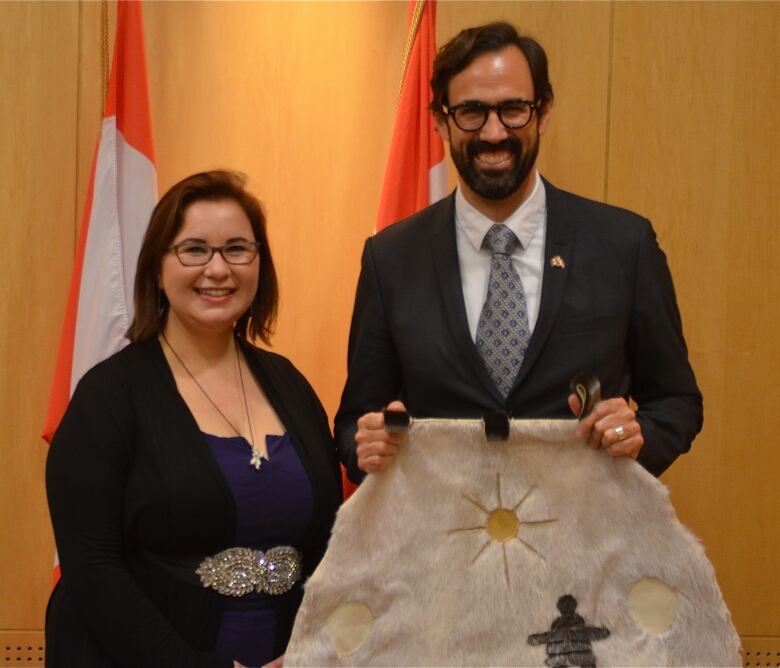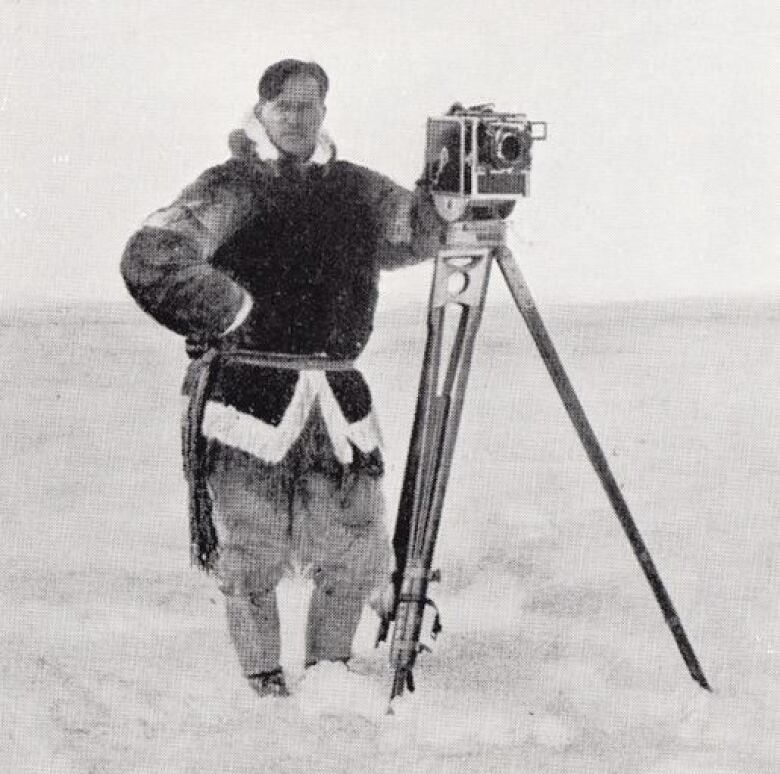New online atlas connects Inuit with lost history of Knud Rasmussen expedition
Provides wider access to data and photos collected in 1920s
A new interactive online map is connecting Inuit with a lostpart of their history captured by Danish explorer Knud Rasmussen, who collected photos, songs and ancestral knowledge from Inuit in the 1920s.
Rasmussen, who was part Inuk and spoke Inuktitut, was the first European to travel the Northwest Passage by dogteam and collected information about Inuit traditions at a time when they were being threatened following the arrival of trading posts and missionaries.
But, until now, these valuable ethnographic documents have been locked away.

"This atlas provides a way to get some of that information that was collected by elders in the '20s and make that available to new generations,"said Amos Hayes, technical manager of Carleton University's Geomatics and Cartographic Research centre.
He helped developtheFifth Thule Expedition Atlas which is only the latestcreated through the centre'sNunaliit mapping platform after the Kitikmeot Heritage Society came up with the idea.
Map will 'bring a sense of identity'
Before this,Hayes says the documents could only be seen at the National Museum of Denmark.
The National Museum ofDenmark supported the project,completely openingup the data collection.

"They've put it all under a Creative Commons licence and they've basically deferred to the community for how this information should be presented online," said Hayes.
For, Pamela Gross, the executive director of the Kitikmeot Heritage Society, that meant a lot.
"It will bring a sense of identity and pride and hopefully knowledge to people who are using it," she said.
Gross was even able to learn a little about herself through the project, learning about her mother's maiden name of 'Neglak,' which means 'little gosling.'
Inuit guides and researchers
In Cambridge Bay and other Nunavut communities, Gross says the Inuit connection to the land remains strong but many stories have been lost.
"Everybody tends to go out on the land at some point and you do stumble across old archaeology sites," she said.
"Sometimes there are questions running through your head, 'who lived here? Who was it?' because traditionally Inuit families would live in a certain location."
Hayes said he's also heard concerns from Nunavummiut that some traditional stories and information havebeen lost, which is "a concern in the community."
"Elders have information they'd like the youth to know and there's some generations in the middle that might not have been there, that might have been off at a residential school somewhere, or not able to go out hunting on the land with their elders that they would have done otherwise."

The atlas allows people to sort the data depending on what they are looking for, whether that's informationabout people, places or events alongRasmussen'sjourney.
"There were all kinds of Inuit people who both acted as guides and provided information," said Hayes, "but there were also people who were part of the expedition and so they actually travelled with Rasmussen for a great part of the route and were researchers in their own right."
A living document
DarrenKeith, senior researcher and project lead at theKitikmeotHeritage Society, says"I think maybe just today some people are realizing how important the expedition isor was."
The expedition took a census of residents, which people will now be able to find, and thereis material about the groups which were then called the Netsilik Inuit and the Igloolik Inuit which the group hopes to include in the map when it expands.

"We want to also go to the modern communities and discuss with the community members and ancestors of the people who were visited by the expedition, introduce them to the atlas and have them maybe give us feedback on how it works and make it function better for them."
The Kitikmeot Inuit Association and Carleton University also hope local Inuit willadd their own traditional knowledge to the map.
The atlas got financial support from the Government of Nunavut, the Social Sciences and Humanities Research Council and the Canadian Internet Registration Authority.












_(720p).jpg)


 OFFICIAL HD MUSIC VIDEO.jpg)
.jpg)



























































































